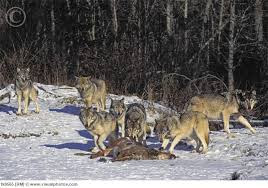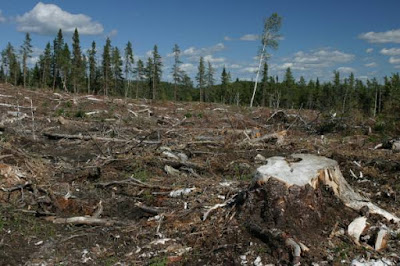https://www.google.com/url?sa=t&rct=j&q=&esrc=s&source=web&cd=3&cad=rja&uact=8&ved=0ahUKEwj9pcux15nLAhVM4CYKHV32CaAQFggpMAI&url=http%3A%2F%2Fwww.theecologist.org%2Finvestigations%2Fhealth%2F685584%2Fdeforestation_could_fuel_deadly_spread_of_malaria_yellow_fever_and_lyme_disease.html&usg=AFQjCNHYcp2CutIvkuYK265HGCz3yLox1w
Deforestation could fuel deadly spread of malaria, yellow fever and Lyme disease
David Hawkins
17th November, 2010
The economic and climate-related impacts of forest destruction are well known, but continued logging could unleash devastating new pandemics and spread fatal diseases into the human population, scientists tell the Ecologist
The costs of deforestation in terms of climate change, biodiversity and economics are well known. Rainforests are also reservoirs for possible drugs, many of which have not yet been explored. But alarming new scientific research is presenting another compelling case for the urgent need to stop destruction of the world's forests.
In a series of exclusive interviews, scientists have told the Ecologist that if we don't keep remaining forests intact there is a danger that some of the planet's most life-threatening diseases could spread on a dangerous and unmanageable scale. The experts also warn that there is a serious risk of unleashing pandemics of new viruses into the world's human population.
Continued deforestation has the potential to unleash
devastating pandemics into
human populations, scientists claim
Ravinder Sehgal, associate professor of biology at San Francisco State University, specialises in studying the effects of deforestation on African rainforest birds by mapping and modelling their diseases and blood parasites. But his research has huge potential relevance to human health.
'Non-migratory birds are a more natural system than humans, who move around a lot, so in looking at them we can determine how ecology affects the spread of disease a bit more easily,' he says. His work in Africa on species including the olive sunbird has revealed the effects of deforestation: 'We found different types of malaria in the same species of bird in deforested versus intact areas.'
The implications of this are clear, according to Sehgal: deforestation upsets the ecological balance, allowing diseases to move in unpredictable ways.
Spreading malaria
Africa has already witnessed an expansion of malaria's range. Dr Steve Lindsay, professor of public health entomology at the London School of Hygiene & Tropical Medicine, has nearly three decades of experience looking at vector-borne diseases throughout African and Asia.
'Deforestation raises ground temperature, increasing the rate at which mosquitoes develop into adults, frequency of blood feeding, the rate at which parasites are acquired, and the development of the parasite within mosquitoes,' he says. These increased surface temperatures due to forest clearing have allowed malaria parasites to spread their range to higher elevations, with the disease now commonly encountered in the previously malaria-free highlands of East Africa. 'For every 1 per cent of reduction in forest cover there is an 8 per cent rise in malaria mosquito population.'
With disease, however, nothing is straightforward. Lindsay acknowledges that in much of southeast Asia malaria is passed on by a forest-dwelling mosquito, so deforestation there could actually reduce cases
.
In the Amazon, the primary vector for malaria is a species of mosquito named
Anopheles darlingi. Recorded at very low levels a few decades ago, and even absent from many areas, this mosquito has made a massive comeback in recent years, according to scientists. Jonathan Patz, professor of global environmental health at the University of Madison, Wisconsin, is a widely published member of the Intergovernmental Panel on Climate Change, with a special interest in ecology, land-use change and human health. He sees this upsurge as a direct result of deforestation: 'We don't yet know the mechanism, but the partially sunlit pools in deforested areas yield more mosquito larvae.' Logging and clearance are seen as creating an ideal habitat for malaria incubation.
Things don't necessarily get better over time. Patz says that 'the mosaic effect' of secondary, regrowth forest and abandoned land can be 'even worse' for malaria than recently deforested locations. Additionally, once malaria has been allowed to arise it is difficult to contain. 'Places that historically had been logged had a much higher incidence of malaria among people,' he says. When an area has been cleared of forest it can remain contagious for a long time.
Logging dangers
Yellow fever is another deadly disease whose complex ecology can be sent spiralling by deforestation. Usually, it is passed from monkey to monkey by mosquitoes in the high canopy. Logging can bring the monkeys closer to human habitation, and foresters into direct contact with the disease. Infected individuals from these fringe populations may then visit cities where the pathogens are picked up by the urban mosquito,
Aedes aegypti, which also carries dengue fever. In this way new outbreaks can occur.
Along with deforestation, climate change and population movement, land-use change is capable of bringing diseases to new areas. In recent times the disease leishmaniasis (vectored by sandflies) has shifted its reservoir from wild animals to domestic dogs. Rice paddies in the Amazon have led to an increase in rodents, and so greater incidence of leptospirosis (Weil's disease). Professor Patz notes that large numbers of
A. darlingi larvae are found in commercial fishponds. He claims that foregrounding strategies such as farming fish species that feed on mosquito larvae could be crucial methods of combating disease in these high-risk zones.
Lafcadio Cortesi, forests campaign director for Rainforest Action Network, recognises all this as a serious threat, and states that 'in terms of human productivity and quality of life, malaria is already having a huge effect'. This is an issue underexploited by environmental campaigners so far, and one that may become increasingly central. He brings in an ethical angle: 'The few elites mostly benefiting from logging activity aren't [yet] affected by the diseases they're helping to spread.'
New science of this type will be another powerful ally for those fighting for protection of the world's forests. We've heard of 'avoided deforestation', when forests are preserved on economic grounds, but what about the unreckonable savings of potentially 'avoided disease' made by keeping them intact?
HIV viruses
Regarding these multifarious costs, Matthew Lebreton, director of the Central Africa Ecology Program for the Global Viral Forecasting Initiative (GVFI), wonders of HIV/AIDS: 'If we were doing the same work we are today in these African villages, 50, 80 or 100 years ago, what could have been done to prevent the disease or reduce its impact?' He warns: 'We are seeing new viruses in the same family as HIV crossing over into populations now.'
Headed by the dynamic scientist Nathan Wolfe, GVFI places itself 'at the interface of potentially dangerous diseases and human populations'. Monitoring diseases in places such as forest edges and regularly testing the blood of people there, while looking out for new illnesses, Matthew Lebreton and his team have a wealth of on-the-ground experience. Populations in these areas have a higher risk of contracting zoonoses (diseases that can pass from animals to humans – swine flu, avian flu and SARS being famous examples) that could then escalate. This kind of cutting-edge research is crucial for future health worldwide.
'The only way to really prevent pandemics is through education, addressing how to change behaviour and avoid risks,' Lebreton explains. Putting a name and a place to a virus – where it was discovered and in what animal or person – helps people in rural communities visualise these pathogens as real threats. 'Globally, vital to the process of prevention will be finding out new ways of making very targeted interventions related to particular species or particular behaviours to stop transmission,' he says. He cites ebola outbreaks after people have retrieved dead animals from the forest, or blood contact following hunting, as examples.
Pointing out something else easily forgotten, Lebreton says: 'Animals are just as much victims of disease as we are, and finding starting points of those viruses is extremely important. It's really significant for conservation to figure out what risks those animals have in the long term.'
Chimpanzees and (already-endangered) gorillas have suffered tremendously from ebola in Central Africa. GVFI is keen to dovetail the interests of human health with conservation. Bushmeat-hunting is already illegal in many places, and when people are aware of the risks of diseases such as ebola they are less likely to target primates.
Wildlife
Lebreton adds: 'There is an enormous number of viruses in wild animals already that we know very little about.' Understanding this diversity is a significant part of forest ecology, as deforestation can have complex and subtle effects. 'There are a few species, such as bats, that tend to be more susceptible to disease when their habitat it threatened or when they're put under stress. Then they are more likely to become infectious,' he says. At the same time, forest fragmentation can cause population bottlenecks, with the resulting inbreeding making animals weaker and in more danger of contracting and carrying diseases.
There is a human correlation to this, too, as Ravinder Sehgal suggests: 'People living with HIV/AIDS in these deforested areas might be more likely to get some of these new pathogens. It is tremendously complicated what's going to happen in Africa with the interactions between different diseases and deforestation. I imagine that immuno-compromised populations are breeding-grounds for new pathogens, because if a virus gets into a person with HIV/AIDS it's more likely and more able to mutate and survive in that person. So a person with HIV/AIDS is like a mixing ground, where these pathogens can potentially evolve and become more pathogenic and spread to other people.'
Sehgal also points to new research into something known as the 'dilution effect': 'Species-rich communities can potentially snuff out transmission of pathogens, such as parasites, by "wasted" transmissions to hosts who are unable to pass the parasite on to the next life stage.' This is another way in which biodiversity offers us a hidden and vital service. The enormous harmful effect of deforestation only hastens the demise of such natural systems, increasing the chance of diseases leaking out.
Lack of understanding
It might sound as though these threats are particular to the tropics, but deforestation in temperate zones can have serious consequences as well. In North America the prevalence of Lyme disease has risen following forest fragmentation. The ensuing reduction in mammal diversity has enabled the white-footed mouse – a prime carrier of the pathogen – to proliferate over new territories due to having fewer predators and competitors. Ticks feeding on the mice can pass the disease to humans. A similar situation exists in much of Asia with tick-borne encephalitis.
It's clear that the expansion and emergence of infectious diseases due to global deforestation is of pressing concern. Scientists agree on the urgency of the case and acknowledge that the issue is not" sufficiently understood.
Patz complains: 'These studies have not been well funded; the value of intact forest to protect public health is certainly underappreciated, and policymakers need to take this into account. Links between ecosystem changes and disease-spread are currently unrecognised, and this is insidious to the extent that by the time we have an epidemic we often don't look far back enough to see the causal factors, we just look at the proximal issues such as changes in mosquito-control or human population migration. In many cases it really goes back to the ecosystems and what we're doing to them – new risk factors that may cause the emergence or resurgence in diseases. Many of the irreversible changes we're doing to our landscape could lead to serious public-health threats. We must manage land-use more conscientiously and in a way that minimises the unintended consequences.'



















